 1998 Porsche 911 (996) Dimensions, Size & Specs
1998 Porsche 911 (996) Dimensions, Size & SpecsMeasurements of the 1998 Porsche 911, engineered for optimal performance and comfort
| Dimensions | |
|---|---|
| Length: | 4430 mm174.4 in14.5 ft |
| Width: | 1765 mm69.5 in5.8 ft |
| Height: | 1270-1305 mm50.0-51.4 in4.2-4.3 ft |
| Ground Clearance: | 100 mm3.9 in0.3 ft |
| Trunk Capacity (Max): | 100-130 liter3.5-4.6 cu ft |
| Weight Specifications | |
| Curb Weight: | 1320-1420 kg2910-3131 lbs |
| Maximal permitted Weight: | 1630-1820 kg3594-4012 lbs |
| Tire Specifications | |
| Rims Sizes: | 17-inch rims:
|
| Tire Sizes: |
|
The Porsche 911 (996) generation, produced from 1997 to 2001, marked a significant evolution in the iconic 911 lineup, blending modern engineering with classic sports car heritage. This 1998 coupe model showcases a length of 4430 mm (174.4 inches), a width of 1765 mm (69.5 inches), and a height ranging between 1270 mm to 1305 mm (50.0 to 51.4 inches), making it a compact yet striking presence on the road. The vehicle's curb weight varies between 1320 kg and 1420 kg (2910 to 3130 lbs), depending on specific configurations, while the maximum weight ranges from 1630 kg to 1820 kg (3595 to 4012 lbs), reflecting its lightweight sports car design aimed to enhance performance and handling.
Practicality is maintained with a rear luggage capacity of 100 to 130 liters (3.5 to 4.6 cubic feet) when the rear seats are folded, providing modest storage options suitable for everyday use or weekend getaways. Ride height is low at 100 mm (3.9 inches), contributing to the car’s exceptional road grip and aerodynamic profile.
The 911 (996) rides on rims sized 7J x 17 and 9J x 17, with tire options including 205/50 R17, 255/40 R17, 225/40 R18, and 285/30 R18, tailored to offer a blend of comfort and sport performance. This generation of the Porsche 911 remains a beloved model for enthusiasts who appreciate a classic sports car dynamic coupled with a modern design and engineering advancements.
Discover the standout features that make the 1998 Porsche 911 a leader in its class
Have a question? Please check our knowledgebase first.
The Porsche 911 (996) generation measures 4430 mm (174.4 inches) in length, 1765 mm (69.5 inches) in width, and has a height ranging from 1270 mm to 1305 mm (50 to 51.4 inches). These dimensions make it a compact and sleek sports coupe, offering balanced proportions that contribute to its dynamic driving characteristics. The relatively low height enhances its aerodynamic profile, while the narrow width compared to modern sports cars aids agility and handling. These dimensions reflect Porsche's design philosophy for the 996 generation, combining classic 911 styling cues with modern performance requirements.
The curb weight of the Porsche 911 (996) ranges from 1320 kg to 1420 kg (approximately 2910 to 3130 pounds). This weight is considered moderate for a sports car of its era, balancing structural rigidity with performance agility. The relatively low curb weight contributes to the 911's responsiveness and handling precision, essential traits for its sports car pedigree. Weight distribution is optimized to enhance driving dynamics, aided by the rear-engine layout. Compared to other sports coupes from the late 1990s and early 2000s, the 996 maintains competitive mass, ensuring it remains nimble and enjoyable to drive.
The Porsche 911 (996) features a ground clearance of 100 mm (3.9 inches), which is quite low compared to typical passenger cars. This low ride height is essential for improved aerodynamics and enhanced handling stability at higher speeds typical of sports cars. However, the limited ground clearance means owners need to be cautious when navigating speed bumps, steep driveways, or uneven surfaces to avoid potential undercarriage damage. While it may slightly reduce daily practicality, this trade-off is common in sports cars and is well compensated for by the vehicle's performance advantages and precise road feedback.
The Porsche 911 (996) comes equipped with a variety of rim sizes, including 7J x 17 inches for the front and 9J x 17 inches for the rear wheels. Optional or upgraded models might feature 9J x 18 inches for both front and rear. The standard tire sizes are 205/50 R17 on the front and 255/40 R17 on the rear, with some versions sporting 225/40 R18 fronts and 285/30 R18 rears. These tire and rim specifications are designed to optimize grip, handling, and ride comfort, balancing the car’s sporty performance with road usability. The staggered setup contributes to the rear-engine car’s traction and cornering stability.
The maximum weight capacity, or Gross Vehicle Weight Rating (GVWR), for the Porsche 911 (996) ranges from 1630 kg to 1820 kg (approximately 3594 to 4012 pounds), depending on specific variants and equipment levels. This indicates the total weight the vehicle can safely carry, including passengers, cargo, and fuel. Given the curb weight variations between 1320 kg and 1420 kg, the payload capacity can be estimated roughly between 210 kg to 500 kg. This capacity supports carrying two passengers comfortably alongside some luggage or gear, although it's limited compared to larger vehicles given the 911's sports car design. Drivers should consider this capacity when planning trips with additional cargo.
When the rear seats of the Porsche 911 (996) are folded down, luggage capacity ranges from 100 to 130 liters (approximately 3.5 to 4.6 cubic feet). This space is primarily located in the front trunk (frunk), as the 911 rear-engine design lacks a traditional rear cargo area. While modest compared to sedans or SUVs, this luggage room is typical for a sports coupe and allows for essential travel items like small suitcases or golf bags. Owners planning extended trips may need to prioritize packing lighter or opt for soft bags that can be more easily arranged within the limited space.
Yes, the Porsche 911 (996) generally fits comfortably into a standard garage. With a length of 4430 mm (174.4 inches), width of 1765 mm (69.5 inches), and height between 1270 mm and 1305 mm (50 to 51.4 inches), it is well within the dimensions that most single-car residential garages accommodate. Standard garage dimensions typically range from about 2400 mm to 3000 mm in width and 4800 mm to 6000 mm in length, so the 996's compact sports car dimensions allow for easy parking with sufficient room to open doors and move around the vehicle. Its low height also poses no drainage or clearance issues in typical garage settings.
Compared to its predecessor, the Porsche 911 (993), the 996 generation exhibits increased length and slight changes in height and width, signifying a modernization in size to enhance aerodynamics and interior space. The 996 measures 4430 mm (174.4 inches) long and is wider at 1765 mm (69.5 inches), whereas the 993 was around 4270 mm (168 inches) in length and narrower in width. The height of the 996 ranges from 1270 mm to 1305 mm (50 to 51.4 inches), similar to the 993 but with subtle alterations to improve cabin space and styling. These dimensional changes reflect Porsche's shift to a more contemporary design with improved occupant comfort and driving dynamics.
The Porsche 911 (996) is competitively sized among sports cars of the late 1990s and early 2000s. Its length of 4430 mm (174.4 inches) and width of 1765 mm (69.5 inches) place it roughly in the middle of its class, slightly longer than cars like the Audi TT first generation but shorter than some versions of the Chevrolet Corvette C5. The relatively low height, 1270-1305 mm (50-51.4 inches), aligns with the standard sports car profile emphasizing aerodynamics. Compared to rivals like the BMW Z3 or Nissan 300ZX, the 996 offers similar footprint dimensions but with a distinctive rear-engine layout that uniquely influences space utilization and driving dynamics.
The Porsche 911 (996) marked a significant evolution for the 911 line, introducing a water-cooled flat-six engine for the first time, which was a departure from the air-cooled engines of previous generations. Produced from 1997 to 2001, this generation combined classic 911 design elements with contemporary technology improvements, delivering better performance, reliability, and emissions compliance. The 996 featured a new chassis and suspension design, enhancing handling and ride quality. Notably, its headlight design shifted to a more modern, integrated look that sparked some debate among enthusiasts. Inside, the car offered more comfort and updated infotainment options to suit modern expectations. Overall, the 996 balanced tradition with innovation, laying the groundwork for future 911 models.
Discover similar sized cars.
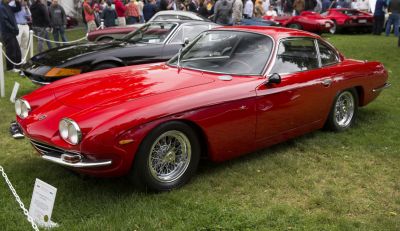
| Production: | 1965-1968 |
|---|---|
| Model Year: | 1967 |
| Length: | 4460 mm175.6 in |
| Width: | 1730 mm68.1 in |
| Height: | 1285 mm50.6 in |
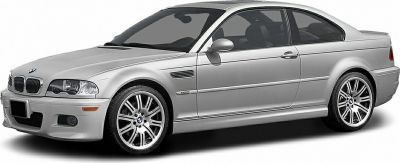
| Production: | 2000-2006 |
|---|---|
| Model Year: | 2000 |
| Length: | 4492 mm176.9 in |
| Width: | 1924 mm75.7 in |
| Height: | 1372 mm54.0 in |
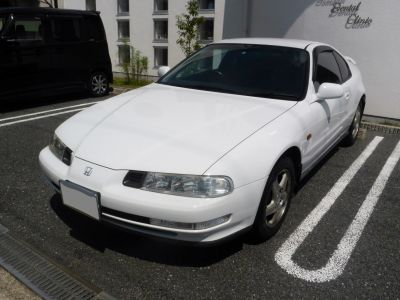
| Model Year: | 1992 |
|---|---|
| Length: | 4440 mm174.8 in |
| Width: | 1765 mm69.5 in |
| Height: | 1290 mm50.8 in |
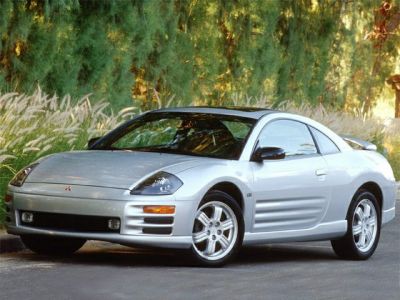
| Production: | 1999-2002 |
|---|---|
| Model Year: | 2000 |
| Length: | 4455 mm175.4 in |
| Width: | 1750 mm68.9 in |
| Height: | 1310 mm51.6 in |
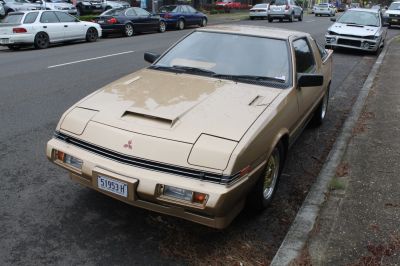
| Production: | 1982-1990 |
|---|---|
| Model Year: | 1982 |
| Length: | 4424-4430 mm174.2-174.4 in |
| Width: | 1705-1745 mm67.1-68.7 in |
| Height: | 1315 mm51.8 in |
